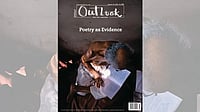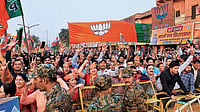There are signs of increasing friction between Tibetans and the local Indian community in Himachal Pradesh. Why?
It’s a major achievement that we’ve lived here for 50 years without any major incident. It’s natural for small differences to crop up and the reason why more of this is happening now is that the old Tibetans who came in the 1960s were the true Tibetans, reared and imbued with genuine Tibetan cultural and social ethos. But the new arrivals, who began coming after 1988, are products of a harsh Chinese regime. They have known only violence and life under the red flag, and are intolerant. Under our own census, which we conducted in 2009, we have estimated that roughly 30 per cent of the population in Dharamsala comprises new arrivals.
Many Tibetans in India want Indian citizenship. What is your government’s view?
For the moment, we will not seek blanket citizenship for our community. There are two reasons for this. Firstly, except for voting and electoral rights, we enjoy all the facilities and benefits that any Indian citizen enjoys. Secondly, we have been issued a yellow identity certificate by the Indian government, on which we are given visas.
Many Tibetans feel that as a refugee, the average Tibetan in India has a second-class status.
This is not true. Look at me. Even without getting Indian citizenship, I have been given so much respect and opportunity here. Though I have no formal education, I was the president of the Association of Indian Universities in 1998. What should I call it, Indian generosity or carelessness? A Japanese friend told me that the freedom we enjoy here could not be replicated even in Japan, a Buddhist country. However, we are aware of some worrying trends. For instance, in Majnu ka Tila in Delhi, a couple of hundred Tibetans have been given voter ID cards by Indian politicians. This is illegal. Some 30-odd Tibetans have also taken Indian passports without taking Indian citizenship.


























